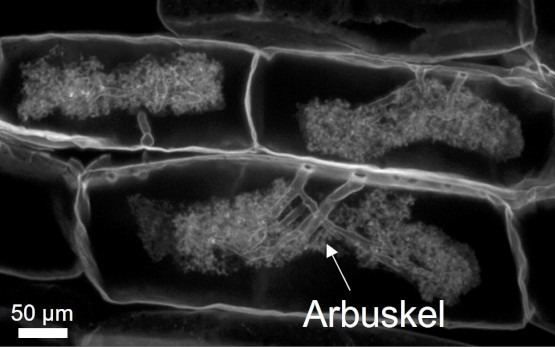Researchers were able to show that inoculating maize fields with mycorrhizal fungi can increase harvest yields. In addition, indicators were found for predicting the success of the measure. The findings were published in the scientific journal Nature Microbiology.
Promoting native beneficial soil organisms whilst increasing yields and saving on mineral fertilisers and plant protection products – is this feasible? Researchers from Agroscope, the Universities of Zurich and Basel and the Research Institute for Organic Agriculture FiBL have responded in the affirmative. Mycorrhizal fungi plan a key role here, and can increase yields by up to 40%. Success was not always achieved, however, which is why the experts set out to pinpoint the success factors.
Success is predictable
Different modelling approaches were used to identify the main soil properties best able to explain the differences in the yields achieved after the inoculation of a fungus. Carbon and phosphorus content correlated negatively and mineralised nitrogen and magnesium correlated positively with inoculation success. The microbiome composition of the native soil fungi was almost twice as influential on inoculation success as soil properties. Thus, researchers were able to reliably predict success in 9 out of 10 fields.
In addition, experts investigated the root microbiome at the end of the season and discovered that in fields with a high growth stimulation, the mycorrhizal fungi substantially suppressed the pathogenic fungi in the roots.
Effect of mycorrhiza
Mycorrhizal fungi enter into symbiotic relationships with 80% of all plant species, including important crops such as maize and wheat. The fungi supply nutrients and in return receive carbohydrates and fatty acids produced by the plant through photosynthesis. However, not only do mycorrhizal fungi improve the nutrient uptake of the plants; they also play a key role in improving soil structure and in soil nutrient fixation, the reduction of greenhouse gas emissions, drought tolerance and disease resistance.
The trials were conducted over a three-year period on 800 acreages and 54 maize fields in northern and eastern Switzerland. The fungi were worked into the soil before sowing.






